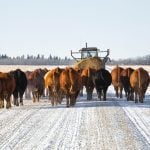The mental and physical health of a foal is strongly linked to the nature and nurturing of its dam. Their robustness is coupled with more than just the genetic makeup of the mare. A broodmare on a well-balanced diet in a healthy living environment is more likely to produce a well-balanced and healthy foal that



